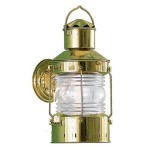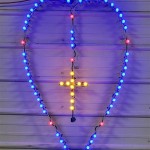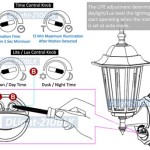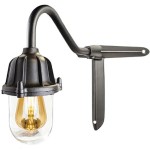Photocell Sensor for Outdoor Lighting: A Comprehensive Guide
Outdoor lighting plays a crucial role in enhancing security, improving visibility, and creating ambiance in residential and commercial spaces. While traditional lighting systems rely on timers or manual switches, photocell sensors offer a more efficient and convenient way to control outdoor illumination. These sensors utilize light-sensitive components to automatically switch lights on and off based on the ambient light levels. This article will delve into the workings, benefits, and considerations of photocell sensors for outdoor lighting.
How Photocell Sensors Work
Photocell sensors, also known as light-sensitive switches, operate on the principle of photoconductivity. They contain a semiconductor material that changes its electrical resistance based on the intensity of light falling on it. When the ambient light level drops below a predetermined threshold, the resistance of the semiconductor decreases, allowing electricity to flow through the sensor and activate the connected lights. Conversely, when the light level rises above the threshold, the resistance increases, interrupting the electrical circuit and switching off the lights.
Photocell sensors are typically installed in outdoor locations with clear visibility of the sky. They are often housed in weatherproof enclosures to protect them from the elements. The sensor's sensitivity can be adjusted to suit specific needs. For example, a higher sensitivity setting can be used in areas requiring illumination during dusk and dawn, while a lower sensitivity setting is appropriate for areas that only need lighting during complete darkness.
Benefits of Photocell Sensors for Outdoor Lighting
Photocell sensors offer a compelling array of benefits for outdoor lighting applications:
1. Energy Efficiency
Photocell sensors eliminate the need for lights to be on during daylight hours, significantly reducing energy consumption compared to traditional lighting systems. By automating the lighting process based on ambient light levels, they ensure that lights are only activated when necessary, resulting in lower electricity bills and a reduced carbon footprint.
2. Enhanced Security
Photocell sensors enhance security by automatically illuminating outdoor areas when it gets dark, deterring potential intruders and providing a clearer view of surroundings. The presence of light can deter criminal activity and provide a sense of safety for residents and property owners.
3. Convenience and Automation
Photocell sensors eliminate the need for manual switching of outdoor lights, providing convenience and automation. They ensure that lights are always on when needed, without the hassle of setting timers or remembering to turn them on and off. This convenience is particularly beneficial for residential and commercial properties with large outdoor areas.
4. Extended Lamp Life
Photocell sensors help prolong the life of outdoor lamps. By preventing unnecessary operation during daylight hours, the lamps experience less wear and tear, reducing the frequency of bulb replacements and associated maintenance costs.
Considerations for Choosing and Installing Photocell Sensors
When choosing and installing photocell sensors for outdoor lighting, several factors should be considered:
1. Sensitivity and Threshold
The sensitivity of the photocell sensor determines its reaction to ambient light levels. Higher sensitivity settings activate lights at lower light levels, while lower sensitivity settings require darker conditions for activation. The chosen sensitivity should match the desired lighting requirements and the ambient light levels in the surrounding area.
2. Mounting Location
The mounting location of the photocell sensor significantly impacts its performance. It should be placed in a location with clear visibility of the sky, free from obstructions that may block light. The sensor should also be mounted at a height that allows it to detect ambient light levels accurately.
3. Environmental Considerations
Photocell sensors are typically designed to withstand outdoor elements, but it's essential to consider the specific environmental conditions where they will be installed. Factors like temperature extremes, humidity, and precipitation can affect sensor performance. Choosing a sensor with appropriate weather resistance and protection is crucial.
4. Compatibility with Existing Lighting System
Ensure compatibility between the chosen photocell sensor and the existing outdoor lighting system. Consider the voltage, amperage, and other electrical specifications of the lights and the sensor to ensure proper operation and safety.
Photocell sensors offer a practical and efficient solution for controlling outdoor lighting, providing numerous benefits in terms of energy efficiency, security, convenience, and lamp life. By carefully considering the various factors involved in choosing and installing these sensors, homeowners and property owners can maximize their effectiveness and enjoy the advantages of automated outdoor illumination.

Wall Mounted Photocell Sensor Outdoor Lighting

Hardwire Post Eye Light Control With Photocell Automatic Sensor Switch Ledwholers

120v Ac Photoelectric Switch Photocell Light Dusk To Dawn Sensor For Outdoor Lighting Hardwired Post Eye Control Fruugo Fi

How To Add A Light Sensor Outdoor Lanterns The Navage Patch

Ip54 Outdoor Light Sensor Switch Photocontrol China Photocell Control Made In Com

Solus Photocell Light Sensor Switch For Hardwire Outdoor Lamp Posts With Ezee Change Plug Dusk To Dawn Control

Light Control Socket With Photocell Sensor Outdoor True Value

240v Dusk To Dawn Sensor External Photocell Unit Lumena Lights

Outdoor Light Intensity Sensor Ahkf

Hardwire Post Eye Light Control With Photocell Automatic Sensor Switch Ledwholers
Related Posts







